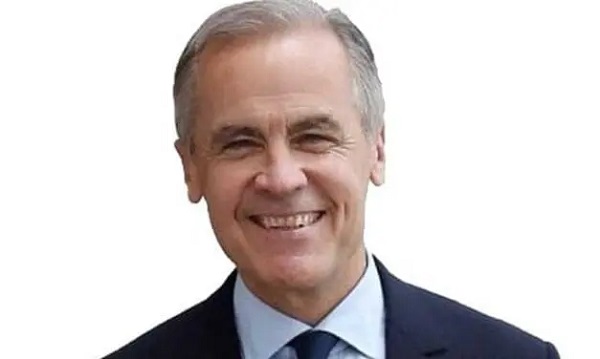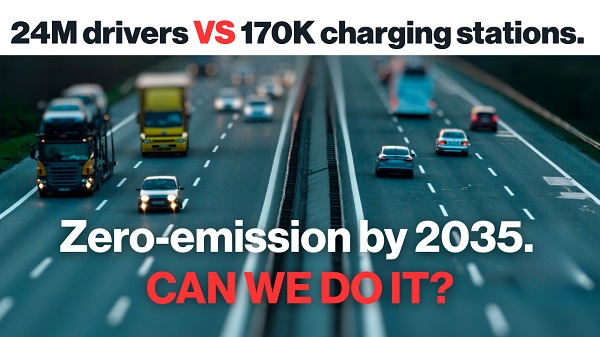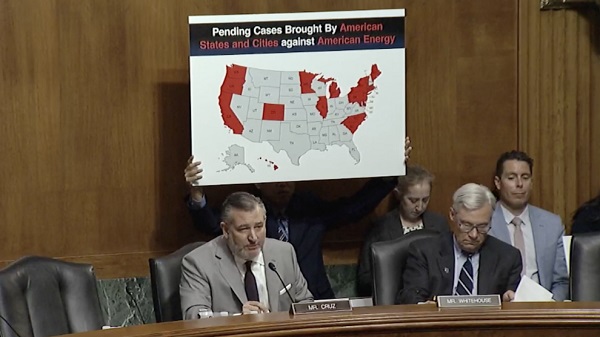Addictions
Provinces are underspending on addiction and mental health care, new report says

The Greta and Robert H. N. Ho Psychiatry and Education Centre, the HOpe Centre, a health care facility for mental illness and addiction in North Vancouver, B.C. (Dreamstime)
By Alexandra Keeler
The provinces are receiving billions in federal funds to address mental health and substance use. Why are so many spending so little?
The provinces are failing to allocate sufficient funding to addiction and mental health care services, a new report says.
The report, released Dec. 19 by the Canadian Alliance on Mental Illness and Mental Health, criticizes the provinces for a “long history of … demanding maximum cash for health care from the federal government with minimum accountability.”
The alliance is a coalition of 18 prominent health organizations dedicated to improving Canada’s mental health care. Its members include the Canadian Medical Association, the Canadian Psychiatric Association and the Canadian Mental Health Association.
On average, the provinces have allocated just 16 per cent of $25 billion in federal health-care funding toward mental health and addiction services, the report says.
“Given the crisis of timely access to care for those with mental health and substance use health problems, why are so many provinces and territories investing so little new federal dollars to improve and expand access to mental health and substance use health care services?” the report asks.
However, some provinces dispute the report’s criticisms.
“The funding received from the federal government is only a small part of Alberta’s total $1.7 billion allocation towards mental health, addiction and recovery-related services,” an Alberta Ministry of Mental Health and Addiction spokesperson told Canadian Affairs in an emailed statement.
“[This] is a nation leading level of investment response.”
‘Take the money and run?’
In 2023, Ottawa and the provinces committed to spend $25 billion over 10 years investing in four priority areas. These areas are mental health and substance use, family health services, health workers and backlogs, and a modernized health system.
The alliance’s report, which looks at provincial investments in years 2023 through 2026, says mental health and substance use are being given short shrift.
B.C., Manitoba and P.E.I. have allocated zero per cent of the federal funds to mental health and substance use, the report says. Three other provinces allocated 10 per cent or less.
By contrast, Alberta allocated 25 per cent, Ontario, 24 per cent, and Nova Scotia, 19 per cent, the report says.
The underspending by some provinces occurs against a backdrop of mental health care already receiving inadequate investment.
“[P]ublicly available data tells us that Canada’s mental health investments account for roughly 5% of their health budgets, which is significantly below the recommended 12% by the Royal Society of Canada,” the report says.
However, several provinces told Canadian Affairs they took issue with the report’s findings.
“Neither the Department of Health and Wellness nor Health PEI received requests to provide information to inform the [alliance’s] report,” Morgan Martin, a spokesperson for P.E.I.’s Department of Health and Wellness, told Canadian Affairs.
Martin pointed to P.E.I.’s investments in opioid replacement therapy, a mobile mental health crisis unit and school health services as some examples of the province’s commitment to providing mental health and addiction care.
But Matthew MacFarlane, Green Party MLA for P.E.I.’s Borden-Kinkora riding, says these investments have been inadequate.
“P.E.I. has seen little to no investments into acute mental health or substance use services,” he said. He criticized a lack of new detox beds, unmet promises of a new mental health hospital and long wait times.
The alliance’s report says New Brunswick has allocated just 3.2 per cent of federal funds to mental health and addiction services.
However, a New Brunswick Department of Health spokesperson Tara Chislett said the province’s allocation of $15.4 million annually from the federal funds does not reflect the additional $200 million of provincial funding that New Brunswick has committed to mental health and substance use.
In response to requests for comment, a spokesperson for the alliance said the federal funding is important, but “does not nearly move the yardsticks fast enough in terms of expanding the capacity of provincial health systems to meet the growing demand for mental health and substance use health care services.”
Our content is always free.
Subscribe to get BTN’s latest news and analysis, or donate to our journalism fund.
‘Blaming and shaming’
The discrepancies between the report’s findings and the provinces’ claims highlight a need for standardized metrics around mental health and addiction spending.
The report calls on federal and provincial governments to develop national performance indicators for mental health and substance use services.
“At the end-of-the day you cannot manage what you do not measure,” the report reads.
It advises governments to communicate their performance to Canadians via a national dashboard.
“Dashboards are being used with increasing frequency in the health system and other sectors to summarize complex information and would be one way to effectively tell a story … to the public,” the report says.
It also urges Ottawa to introduce legislation — what it dubs the Mental Health and Substance Use Health Care For All Parity Act — to ensure equal treatment for mental and physical health within Canada’s health-care system.
This call for mental and physical health parity echoes the perspective of other health-care professionals. In a recent Canadian Affairs opinion editorial, a panel of mental health physicians argued Canada’s failure to prioritize mental health care affects millions of Canadians, leading to lower medication reimbursement rates and longer wait times.
The alliance says its call for more aggressive and transparent spending on mental health and addictions care is not intended to criticize or cast blame.
“This is not about blaming and shaming, but rather, this is about accelerating the sharing of lessons learned and the impact of innovative programs,” the report says.
This article was produced through the Breaking Needles Fellowship Program, which provided a grant to Canadian Affairs, a digital media outlet, to fund journalism exploring addiction and crime in Canada. Articles produced through the Fellowship are co-published by Break The Needle and Canadian Affairs.
Our content is always free.
Subscribe to get BTN’s latest news and analysis, or donate to our journalism fund.
Addictions
New RCMP program steering opioid addicted towards treatment and recovery

News release from Alberta RCMP
Virtual Opioid Dependency Program serves vulnerable population in Red Deer
Since April 2024, your Alberta RCMP’s Community Safety and Well-being Branch (CSWB) has been piloting the Virtual Opioid Dependency Program (VODP) program in Red Deer to assist those facing opioid dependency with initial-stage intervention services. VODP is a collaboration with the Government of Alberta, Recovery Alberta, and the Alberta RCMP, and was created to help address opioid addiction across the province.
Red Deer’s VODP consists of two teams, each consisting of a police officer and a paramedic. These teams cover the communities of Red Deer, Innisfail, Blackfalds and Sylvan Lake. The goal of the program is to have frontline points of contact that can assist opioid users by getting them access to treatment, counselling, and life-saving medication.
The Alberta RCMP’s role in VODP:
- Conducting outreach in the community, on foot, by vehicle, and even UTV, and interacting with vulnerable persons and talking with them about treatment options and making VODP referrals.
- Attending calls for service in which opioid use may be a factor, such as drug poisonings, open drug use in public, social diversion calls, etc.
- Administering medication such as Suboxone and Sublocade to opioid users who are arrested and lodged in RCMP cells and voluntarily wish to participate in VODP; these medications help with withdrawal symptoms and are the primary method for treating opioid addiction. Individuals may be provided ongoing treatment while in police custody or incarceration.
- Collaborating with agencies in the treatment and addiction space to work together on client care. Red Deer’s VODP chairs a quarterly Vulnerable Populations Working Group meeting consisting of a number of local stakeholders who come together to address both client and community needs.
While accountability for criminal actions is necessary, the Alberta RCMP recognizes that opioid addiction is part of larger social and health issues that require long-term supports. Often people facing addictions are among offenders who land in a cycle of criminality. As first responders, our officers are frequently in contact with these individuals. We are ideally placed to help connect those individuals with the VODP. The Alberta RCMP helps those individuals who wish to participate in the VODP by ensuring that they have access to necessary resources and receive the medical care they need, even while they are in police custody.
Since its start, the Red Deer program has made nearly 2,500 referrals and touchpoints with individuals, discussing VODP participation and treatment options. Some successes of the program include:
- In October 2024, Red Deer VODP assessed a 35-year-old male who was arrested and in police custody. The individual was put in contact with medical care and was prescribed and administered Suboxone. The team members did not have any contact with the male again until April 2025 when the individual visited the detachment to thank the team for treating him with care and dignity while in cells, and for getting him access to treatment. The individual stated he had been sober since, saying the treatment saved his life.
- In May 2025, the VODP team worked with a 14-year-old female who was arrested on warrants and lodged in RCMP cells. She had run away from home and was located downtown using opioids. The team spoke to the girl about treatment, was referred to VODP, and was administered Sublocade to treat her addiction. During follow-up, the team received positive feedback from both the family and the attending care providers.
The VODP provides same-day medication starts, opioid treatment transition services, and ongoing opioid dependency care to people anywhere in Alberta who are living with opioid addiction. Visit vodp.ca to learn more.
“This collaboration between Alberta’s Government, Recovery Alberta and the RCMP is a powerful example of how partnerships between health and public safety can change lives. The Virtual Opioid Dependency Program can be the first step in a person’s journey to recovery,” says Alberta’s Minister of Mental Health and Addiction Rick Wilson. “By connecting people to treatment when and where they need it most, we are helping build more paths to recovery and to a healthier Alberta.”
“Part of the Alberta RCMP’s CSWB mandate is the enhancement of public safety through community partnerships,” says Supt. Holly Glassford, Detachment Commander of Red Deer RCMP. “Through VODP, we are committed to building upon community partnerships with social and health agencies, so that we can increase accessibility to supports in our city and reduce crime in Red Deer. Together we are creating a stronger, safer Alberta.”
Addictions
Saskatchewan launches small fleet of wellness buses to expand addictions care

By Alexandra Keeler
Across Canada, mobile health models are increasingly being used to offer care to rural and underserved communities
Saskatchewan has launched a small fleet of mobile wellness buses to improve access to primary health care, mental health and addiction services in the province.
The first bus began operating in Regina on Feb. 12. Another followed in Prince Albert on March 21. Saskatoon’s bus was unveiled publicly on April 9. All three are former coach buses that have been retrofitted to provide health care to communities facing barriers to access.
“Mobile health units are proven to improve outcomes for people facing barriers to healthcare,” Kayla DeMong, the executive director of addiction treatment centre Prairie Harm Reduction, told Canadian Affairs in an email.
“We fully support this innovative approach and are excited to work alongside the health bus teams to ensure the people we support receive the care they need, when and where they need it.”
Wellness buses
Like all provinces, Saskatchewan has been grappling with the opioid crisis.
In 2023, an estimated 457 individuals died from overdoses in the province. In 2024, that number fell to 346. But the province continues to struggle with fatal and non-fatal overdoses.
In late February, Saskatoon firefighters responded to more than 25 overdoses in a single 24-hour period. Just over a week later, they responded to 37 overdoses within another 24-hour window.
Saskatchewan’s wellness buses are part of the province’s plan to address these problems. In April 2025, the province announced $2.4 million to purchase and retrofit three coach buses, plus $1.5 million in annual operating funds.
The buses operate on fixed schedules at designated locations around each city. Each bus is staffed with a nurse practitioner, nurse and assessor coordinator who offer services such as overdose reversal kits, addiction medicine and mental health referrals.
“By bringing services directly to where people are, the health buses foster safer, more welcoming spaces and help build trusting relationships between community members and care providers,” said DeMong, executive director of Prairie Harm Reduction.
Saskatoon-based Prairie Harm Reduction is one of the local organizations that partners with the buses to provide additional support services. Prairie Harm Reduction provides a range of family, youth and community supports, and also houses the province’s only fixed supervised consumption site.
The mobile model
Saskatchewan is not the only province using wellness buses. Across Canada, mobile health models are increasingly being used to expand access to care in rural and underserved communities.
In Kingston, Ont., the Street Health Centre operates a retrofitted RV called PORCH (Portable Outreach Care Hub) that serves individuals struggling with homelessness and addiction.
“Our outreach services are extremely popular with our clients and community partners,” Donna Glasspoole, manager at Street Health Centre, said in an emailed statement.
“PORCH hits the road two to three days/week and offers a variety of services, which are dependent on the health care providers and community partners aboard.”
Street Health Centre also has a shuttle service that picks up clients in shelters and brings them to medical clinics or addiction medicine clinics.
The PORCH vehicles are not supported by provincial funding, but instead rely on support from the United Way and other grants. Glasspoole says the centre’s permanent location — which does receive government funding — is more cost-effective to operate.
“The vehicles are expensive to operate and our RV is not great in winter months and requires indoor parking,” she said.

Politically palatable
Many mobile health models currently do not provide controversial services such as supervised drug consumption.
The Saskatchewan Health Authority told Canadian Affairs the province’s new wellness buses will not offer supervised consumption services or safer supply, where drug users are given prescribed opioids as an alternative to toxic street drugs.
“There are no plans to provide supervised consumption services from the wellness buses,” Saskatchewan Health Authority spokesperson Courtney Markewich told Canadian Affairs in a phone call.
This limited scope may make mobile services more politically palatable in provinces that have resisted harm reduction measures.
In Ontario, some harm reduction programs have shifted to mobile models following Premier Doug Ford’s decision to suspend supervised consumption services located within 200 metres of schools and daycares.
In April, Toronto Public Health ended operations at its Victoria Street fixed consumption site, replacing it with street outreach and mobile vans.
The Ontario government’s decision to close the sites is part of a broader pivot away from harm reduction. The province is investing $378 million to transition suspended sites into 19 new “HART Hubs” that offer primary care, mental health, addictions treatment and other supports.
Glasspoole says that what matters most is not whether services are provided at fixed or mobile locations, but how care is delivered.
Models that “reduce barriers to care, [are] non-judgemental, and [are staffed by] trauma-informed providers” are what lead more people toward treatment and recovery, she said in her email.
In Saskatchewan, DeMong hopes the province’s new wellness buses help address persistent service gaps and build trust with underserved communities.
“This initiative is a vital step toward filling long-standing gaps in the continuum of care by providing low-barrier, community-based access to health-care services,” she said.
This article was produced through the Breaking Needles Fellowship Program, which provided a grant to Canadian Affairs, a digital media outlet, to fund journalism exploring addiction and crime in Canada. Articles produced through the Fellowship are co-published by Break The Needle and Canadian Affairs.
Subscribe to Break The Needle
-

 armed forces1 day ago
armed forces1 day agoCanada’s Military Can’t Be Fixed With Cash Alone
-

 Alberta1 day ago
Alberta1 day agoCOVID mandates protester in Canada released on bail after over 2 years in jail
-

 International1 day ago
International1 day agoTrump transportation secretary tells governors to remove ‘rainbow crosswalks’
-

 Business1 day ago
Business1 day agoCanada’s loyalty to globalism is bleeding our economy dry
-

 Business1 day ago
Business1 day agoCarney’s spending makes Trudeau look like a cheapskate
-

 Alberta1 day ago
Alberta1 day agoAlberta Next: Alberta Pension Plan
-

 Alberta2 days ago
Alberta2 days agoAlberta uncorks new rules for liquor and cannabis
-

 Crime2 days ago
Crime2 days agoProject Sleeping Giant: Inside the Chinese Mercantile Machine Linking Beijing’s Underground Banks and the Sinaloa Cartel







